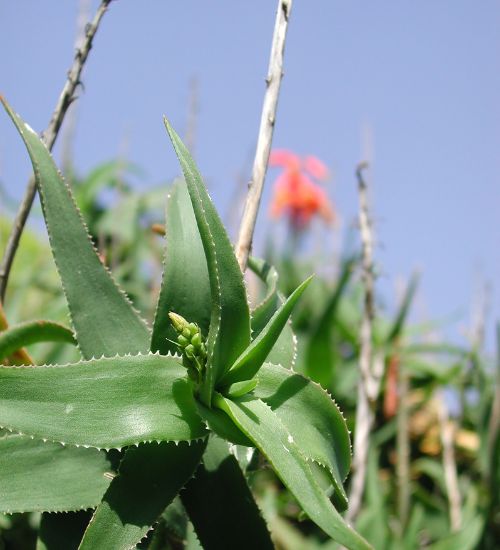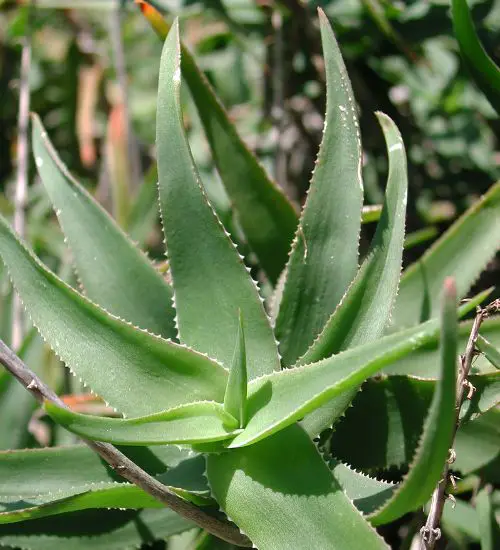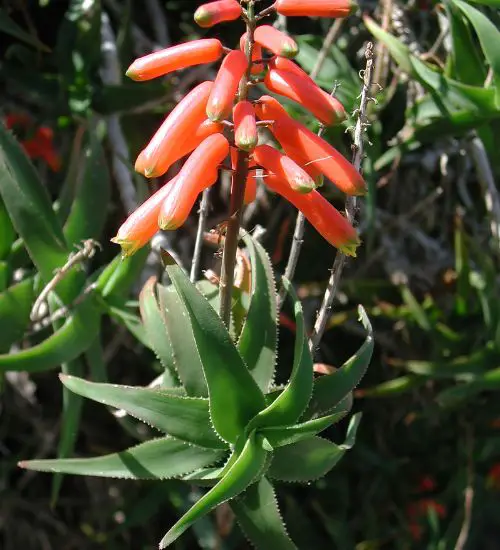Sun: full sun to partial shade
Water: Typical water needs for a succulent
Temperature: Zone 10a from 30° F to 35° F (-1.1 ° C to 1.7° C)
Winter Survival: Not cold hardy
Propagation: offsets, cuttings, seeds
Flower: In the Spring
Flower Type:
Toxic: Generally non-toxic to humans but can be toxic to animals.
Dormant: summer
Space Requirement: Outdoors
Common Problems: pests
Where to buy Aloiampelos Ciliaris?
Basc Care for Aloiampelos Ciliaris
Watering
Regular watering period should be every 2 weeks
One simple tip for you is that you can use some online apps to check the soil status before you go water your succulents. I would recommend the ThePlantsCheck app, it has some nice features there.
Fertilizing
Only feed this succulent during its active growing seasons which means winter. Use the right fertilizer applied in the right amounts. Applying half-strength balanced fertilizer every month or so is recommended for optimal results.
Do not fertilize during summer as the plant is dormant.
Sun & Location Requirements for "Climbing Aloe"
Aloiampelos Ciliaris requires full sun to partial shade. It's best to keep it in an area of your garden or home that gets plenty of bright, indirect sunlight throughout the day. When temperatures are too hot and direct sunlight is too intense, try moving "Climbing Aloe" to a shadier spot for part of the day.
In order to protect Aloiampelos Ciliaris from freezing temperatures, it is important to provide adequate insulation and drainage. A layer of mulch or gravel will help protect the roots by keeping them warm during cold weather. In addition, protection from wind and sun exposure can help reduce the chances of frost damage.
Any succulents in the group will need a large space to grow. You should place your pot outdoor. Since this plant needs a lot of space than other succulents, you should consider not planting them together with other succulents/plants.
Aloiampelos Ciliaris also benefits from some indirect light throughout the day as well, so make sure you give it enough space to soak up light without becoming too exposed to heat.
Propagation
Succulents can be propagated easily by taking offsets from the mother plant and replanting them in fresh soil. The offset will eventually grow into a new succulent that is identical to its parent.
One way to propagate Aloiampelos Ciliaris is by cutting
Aloiampelos Ciliaris can be propagated from seeds. Signs of a good seed is one that is plump, dark in color and slightly sticky. To propagate X from seed, one must prepare a soil mixture of well-draining potting mix, sow the seeds evenly and lightly press them into the surface. Lastly, gently water the soil using a spray bottle and place the container in bright but indirect light.
Toxicity

Aloiampelos Ciliaris is a popular plant, known for its beauty and ease of care. However, it can be toxic to animals due to the presence of saponins in its leaves. Humans are generally unaffected by these compounds, but it’s important to keep pets away from this succulent if you have any in your home.
Pests and Diseases
Aloiampelos Ciliaris can be affected common pests and diseases like most of the other succulents such as mealybugs, scale insects, and Red spider mites.
If you do spot any of pest signs, you can treat your succulent using below methods.
- Mealybugs: quarantine, clean infected plants, soapy water.
- Scale insects: quarantine, clean infected plants, soapy water.
- Red spider mites: Quarantine, clean your infected plants, treatment with a systemic insecticidal/soapy water.
Besides that, to prevent serious health issues from happening, keep your succulent in a well-ventilated area and check it regularly for any signs of pests or health problems.


